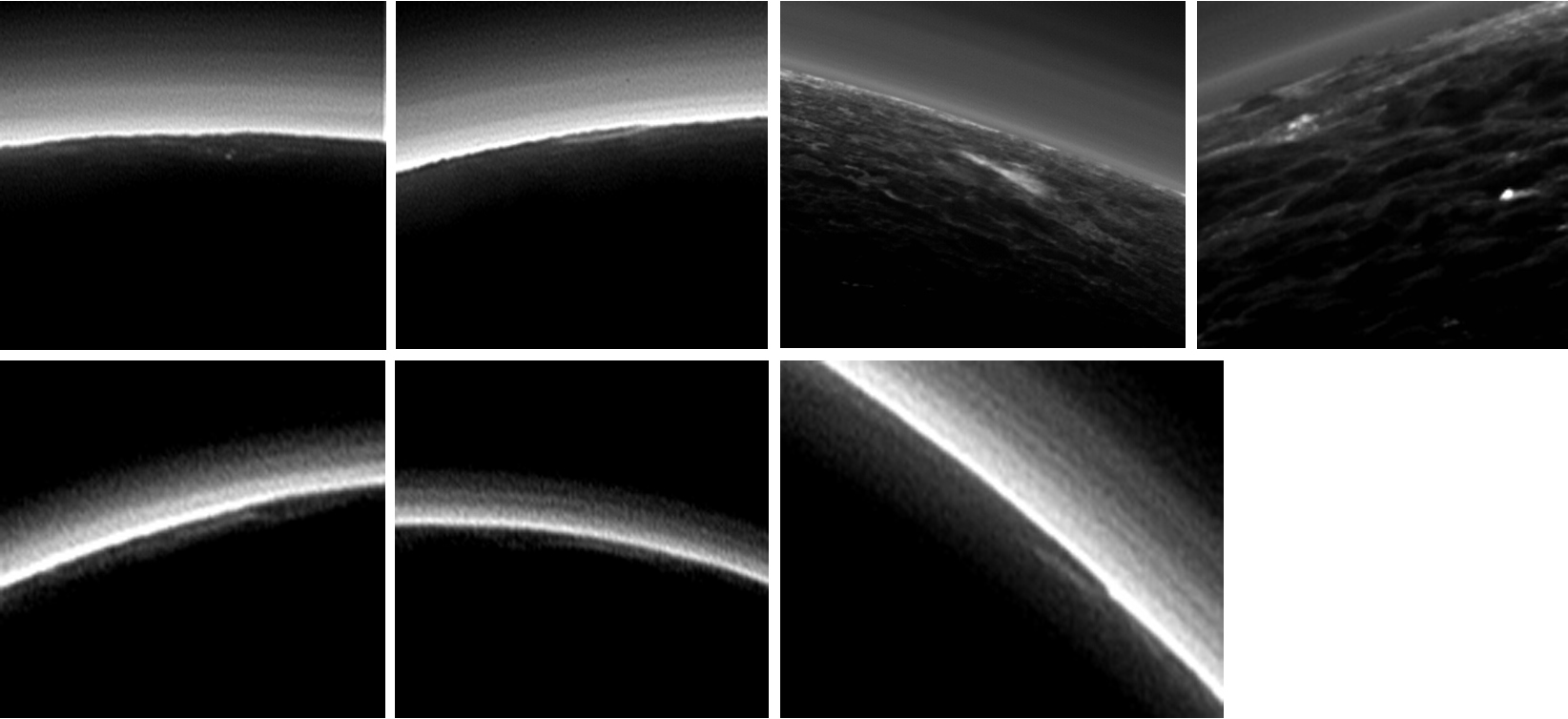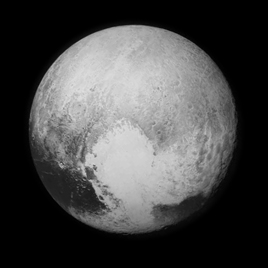“If there are clouds, it would mean the weather on Pluto is even more complex than we imagined.”
Spotting shapes and forms in clouds is a fun pastime on Earth, but now scientists can say they’ve cloud-spotted on one of Earth’s distant neighbors: Pluto.
Alan Stern of the Southwest Research Institute (SwRI) in Boulder, Colo., who is principal investigator of the New Horizons mission that buzzed by Pluto in 2015, described several lines of evidence leading the team to suggest that Pluto may sport partly cloudy skies. “If there are clouds, it would mean the weather on Pluto is even more complex than we imagined,” Stern said.
He presented the findings yesterday at the American Astronomical Society Division for Planetary Sciences meeting and European Planetary Science Congress in Pasadena, Calif.
Cloudy Dreams
Previous observations established that Pluto hosts an atmospheric haze. As sunlight strikes the dwarf planet, it spurs formation of the haze, composed of hydrocarbons like acetylene and ethane. The chemicals coagulate into small particles that scatter sunlight, visible as the blue mist captured by the Long Range Reconnaissance Imager (LORRI) aboard New Horizons when the spacecraft flew by Pluto in July 2015.
The haze is extremely thin, however, whereas patches of particles or vapor that scientists would classify as clouds must be discrete, optically thick objects that block the surface, Stern explained.

To hunt for clouds, the New Horizons team looked at data from LORRI and another instrument, the Multispectral Visible Imaging Camera. In high-resolution images, the team spotted several bright smudges at seemingly low altitudes that blocked Pluto’s surface. They appeared at Pluto’s dawn and dusk, when lower temperatures would allow condensed clouds to form.
Furthermore, the researchers spotted these cloud-like features at low altitudes, which agrees with a planetary atmospheric model of cloud formation developed by SwRI scientists in San Antonio, Texas.
“Very bright implies a very young surface.”
However, because researchers lack precise altitude data, they can’t yet confirm whether the features lie on Pluto’s surface or hang above it, Stern said.
Bright News
The possibility of clouds wasn’t the only news unveiled at the meeting by New Horizons researchers. The team also discovered that parts of Pluto, including its “heart,” Sputnik Planitia, are extremely bright, reflecting almost 100% of the light they receive. Nearby dark areas, meanwhile, reflect only 8–10% of received light.

Scientists study the reflectivity of planets and other bodies to learn more about how old the surface topography and textures are, Bonnie Buratti, a principal investigator at NASA’s Jet Propulsion Laboratory and co-investigator on the New Horizons mission, told Eos.
“Very bright implies a very young surface,” she said, while “darker usually means older.”
Pluto’s brightest areas almost match the dazzle from Saturn’s moon Enceladus, which gets its brightness from active ice volcanoes and geysers. However, Pluto’s varied dark and light surface more closely resembles another of Saturn’s moons, Iapetus, Buratti said.
The findings have implications for more than just Pluto’s history: The brightness of another dwarf planet, Eris, suggests that it could be geologically active, Buratti said. “If we went [to Eris], we wouldn’t be surprised to see some type of geologic activity,” she continued.
—JoAnna Wendel, Staff Writer
Correction, 28 November 2016: An earlier version of this article gave the wrong date for when the New Horizons spacecraft flew by Pluto. This article has been updated with the correct information.
Citation:
Wendel, J. (2016), Pluto observers find possible clouds, remarkably bright surface, Eos, 97, https://doi.org/10.1029/2016EO061479. Published on 19 October 2016.
Text © 2016. The authors. CC BY-NC-ND 3.0
Except where otherwise noted, images are subject to copyright. Any reuse without express permission from the copyright owner is prohibited.

